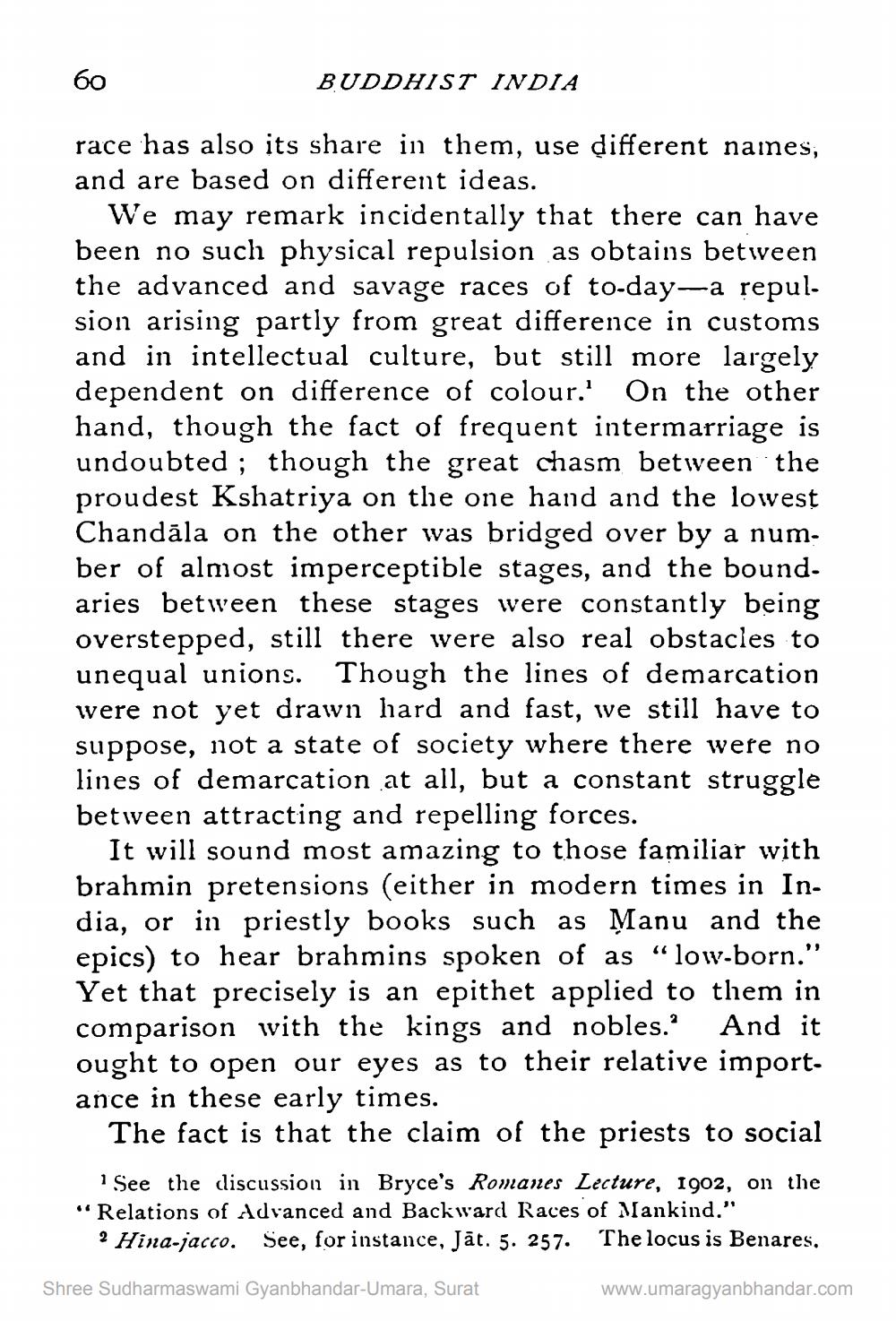________________
60
BUDDHIST INDIA
race has also its share in them, use different naines; and are based on different ideas.
We may remark incidentally that there can have been no such physical repulsion as obtains between the advanced and savage races of to-day-a repul. sion arising partly from great difference in customs and in intellectual culture, but still more largely dependent on difference of colour. On the other hand, though the fact of frequent intermarriage is undoubted; though the great chasm between the proudest Kshatriya on the one hand and the lowest Chandāla on the other was bridged over by a num. ber of almost imperceptible stages, and the bound. aries between these stages were constantly being overstepped, still there were also real obstacles to unequal unions. Though the lines of demarcation were not yet drawn hard and fast, we still have to suppose, not a state of society where there were no lines of demarcation at all, but a constant struggle between attracting and repelling forces.
It will sound most amazing to those familiar with brahmin pretensions (either in modern times in India, or in priestly books such as Manu and the epics) to hear brahmins spoken of as “low-born." Yet that precisely is an epithet applied to them in comparison with the kings and nobles. And it ought to open our eyes as to their relative import. ance in these early times.
The fact is that the claim of the priests to social 1 See the discussion in Bryce's Romanes Lecture, 1902, on the “Relations of Advanced and Backward Races of Mankind.
2 Hina-jacco. See, for instance, Jāt. 5. 257. The locus is Benares.
Shree Sudharmaswami Gyanbhandar-Umara, Surat
www.umaragyanbhandar.com




